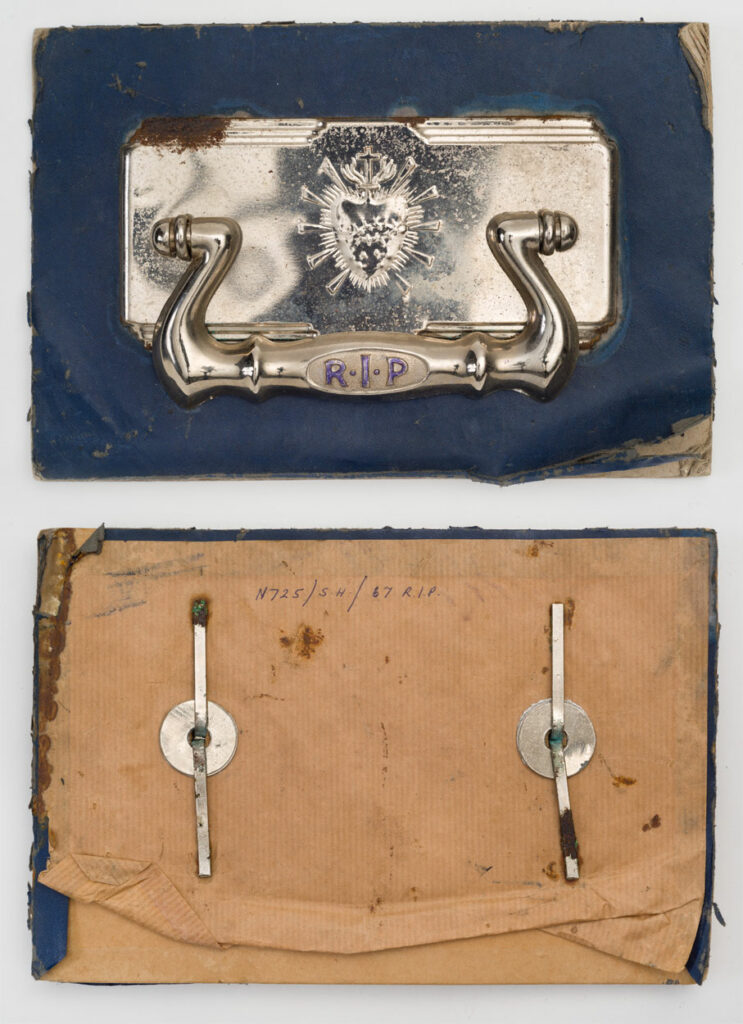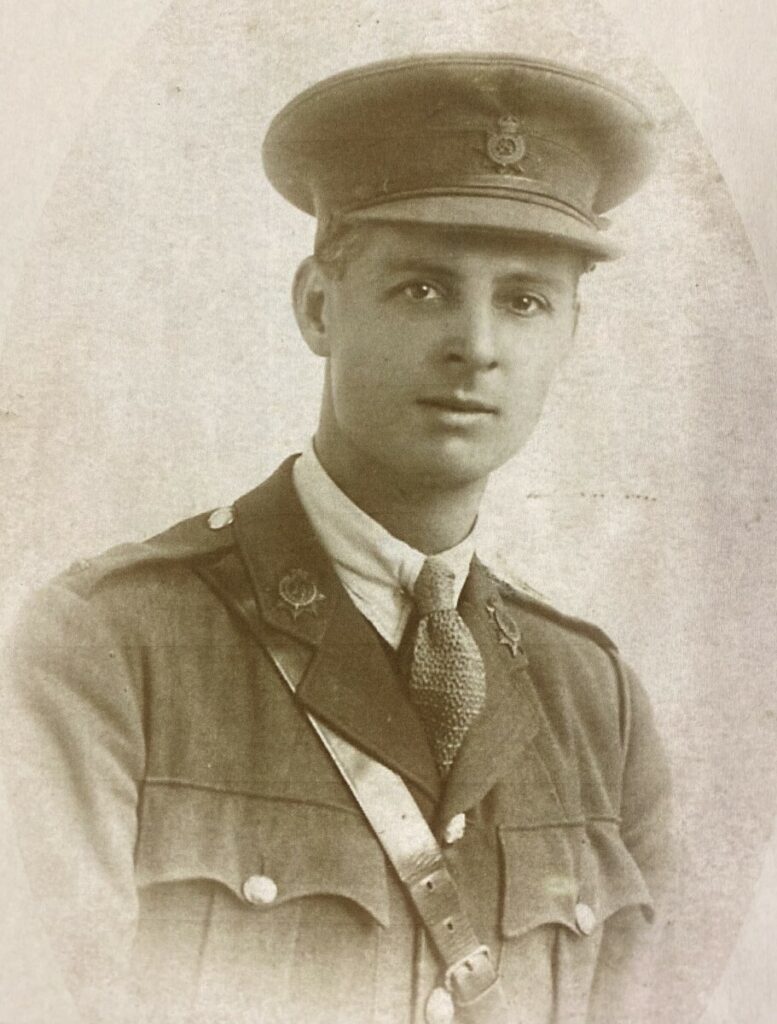

Die cast nickel-plated backplate and handle on cardboard backing.
This handle and its backplate are die cast. They are Newman Brothers’ designs, manufactured off site, as Newman Brothers didn’t have die-casting facilities. They used to sand cast products from 1894 onwards but by the mid 1960s there were more efficient and less time consuming methods available. They commissioned external die-casting companies to produce a range of their designs for them.
The job of the travelling salesmen involved keeping existing customers happy and, of course, finding new business. The main tool of the trade was the travelling salesmen’s bag, full of catalogues and samples. We are fortunate that we have in our collection four of these bags which were left at the factory. Inside we find handles and other fittings proudly mounted on presentation card. Fabric samples of funerary gowns and coffin linings are displayed by means of something resembling a carpet sample book.
Before a travelling salesman made a visit, they would post cards out to prospective clients, advising them that a travelling salesman would be calling within the next few days.Travelling salesmen were amongst the most important staff employed by Newman Brothers, and many went on to be directors.
Charm and good looks were important in this role, and both Arthur Allen and Dai Davies had both.
Arthur Allen worked for Newman Brothers between 1903 and 1939. His son recalls,
“in 1903 he set off for Newman Brothers in a frock coat, bowler hat and rolled-up umbrella. And he said “’I feel like a real commercial traveller’”.
Between 1915 to 1919 Arthur served as a driver in the Army Service Corps making use of his travelling salesman skills acquired while working for Newman Brothers. On his return to work in 1919 he spent a lot of his time selling goods in Ireland. He travelled on his Triumph motorcycle, putting his sample bags into its wickerwork sidecar.
In around 1921 to 1922 during ‘The Troubles’, Arthur had a frightening experience in Ireland with the IRA, an experience that went down in family history. His son, Anthony, recalls
‘He was in Dublin during “The Troubles”, staying at St Andrews Hotel, in bed, asleep, and he heard the door open and he saw somebody with a candle, and the shadow of a revolver, and they said, “Get up! You’re an English spy!” He kept saying, “I am a commercial traveller…get my sample bags.” They said “it’s ammunition” and brought it in, but the first bag that was opened had a great crucifix on top and that did it.’
On seeing the crucifix the IRA men, being Catholics, let him go. It was said in the family that the crucifix had saved his life.
Newman Brothers used travelling salesmen to sell coffin furniture to Irish funeral directors and wholesale manufacturers throughout the 20th century. As the Troubles intensified throughout the 1960s and 1970s, Newmans began to use ‘middle-men’ to sell their goods in Northern Ireland. One such intermediary company (who also had shares in Newman Brothers) was the Doggart family. The Doggarts bought products from Newmans and then sold them on. This was a shrewd way of continuing to trade in Ireland at a time when being British could have cost them business.







